9 Fixes to Stop YouTube From Pausing on Mobile & Desktop
YouTube is inarguably the most popular video platform in the world, thanks in part to its reliable playback. But even the best have their flaws, and when YouTube does has playback issues, it can be incredibly frustrating. After all, you’re expecting a seamless experience when you’re watching your favorite videos, not buffering and lagging.
In this guide, we’ll go over various causes for why YouTube keeps pausing and provide adequate solutions to fix those issues, for both mobile devices and computers.
Table of Contents:
- Reasons for YouTube Videos Pausing
- How to Stop YouTube From Pausing
- 1. Check your network connection
- 2. Restart YouTube
- 3. Update your browser or YouTube app
- 4. Reduce video quality
- 5. Interact with your device at least once every 45 minutes
- 6. Turn off “Remind me to take a break”
- 7. Check if the service is down
- 8. Use YouTube without any headphones/speakers
- 9. Clearing Cache
- FAQs
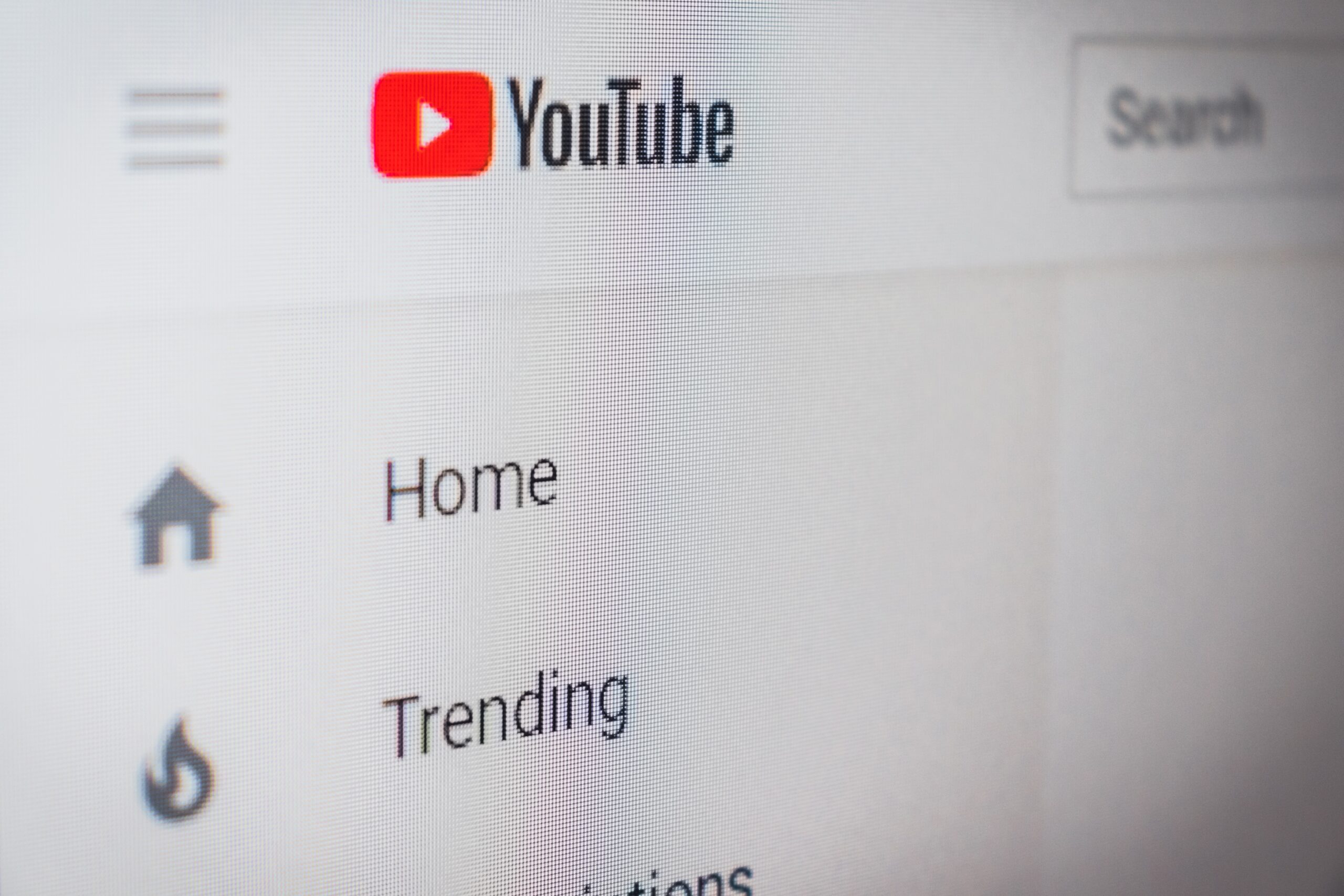
Reasons for YouTube Videos Pausing
There are many possible reasons why YouTube playback might stop. These can range from backend issues like server errors to playback features like the auto-pause setting, or the “Remind me to take a break” feature. It is important to check all of these possibilities before taking any further steps.
How to Stop YouTube From Pausing
Now, let’s tackle the issues head-on and fix YouTube from pausing all the time. These methods work on any device, unless otherwise specified.
1. Check your network connection
First, check your network connection to ensure it’s working. A poor or unstable internet connection is one of the most common reasons why YouTube videos pause. To check your internet connection, you can try loading a website or doing a speed test.
If there’s an issue, connect to a different network. If you are using Wi-Fi, try connecting to your mobile data or a different Wi-Fi network to verify, or rule out the cause. If you’re on desktop/laptop with a LAN port, establish a wired connection to see if that fixes the issue. We also have a dedicated article on how to get better internet speeds, if you’re on Windows.
2. Restart YouTube
Even the most seemingly-complex problems are often solved with a simply power cycle, aka turning the device off then on again. So, just reload the YouTube page, heck, close and re-open your browser to see if that fixes the issue. On mobile, you can just close the app fully and restart your phone to fix YouTube.
3. Update your browser or YouTube app
Sometimes, simply having an outdated browser or app can cause videos to pause or buffer. Ensuring that you’re running the latest version of your browser, or the YouTube app can often resolve these issues on any device.
For Browsers:
Most browsers these days will have automatic updates where it will tell you that an update is ready. This notification will usually appear next to the three-line/three-dot menu or your profile picture in the corner of the address bar.
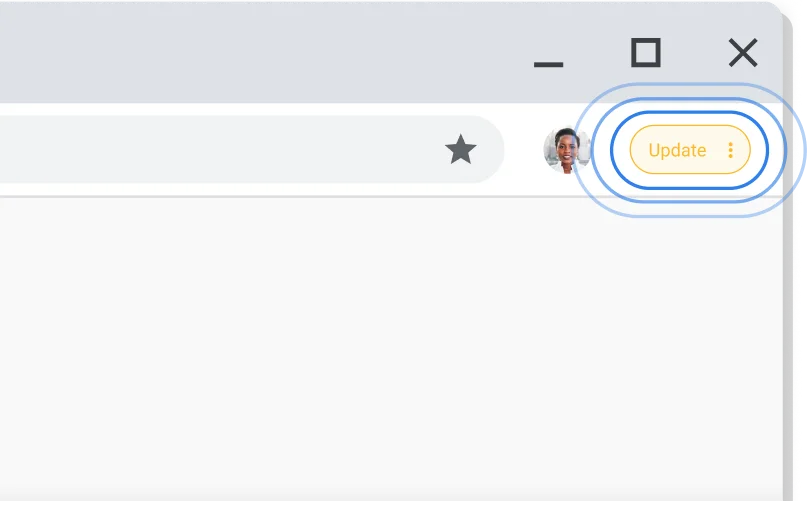
Even if you don’t see such an option, just click on the aforementioned three-dot icon and see if there’s an update option there, otherwise it will be buried somewhere within the browser settings. You can open them and just search for “update” to find the relevant info there.
For the YouTube app on mobile:
Regardless of whether you’re using an Android or iPhone, the YouTube app should automatically update. To check for updates manually, simply open the Google Play Store or App Store and search for YouTube. Open the app page and see if there’s a button saying “Update,” if yes then tap on it to update the app.
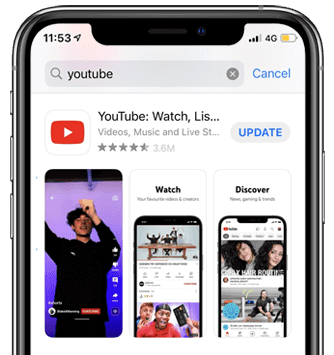
4. Reduce video quality
If your internet connection is not fast enough to stream the video in its current quality setting, YouTube will pause the video to buffer. To avoid this, you can try setting the video quality to something a tad-bit lower than what you’re currently watching it on.
- Open the video and click on the Settings icon (three dots) in the bottom right corner of the video player.
- Select Quality.
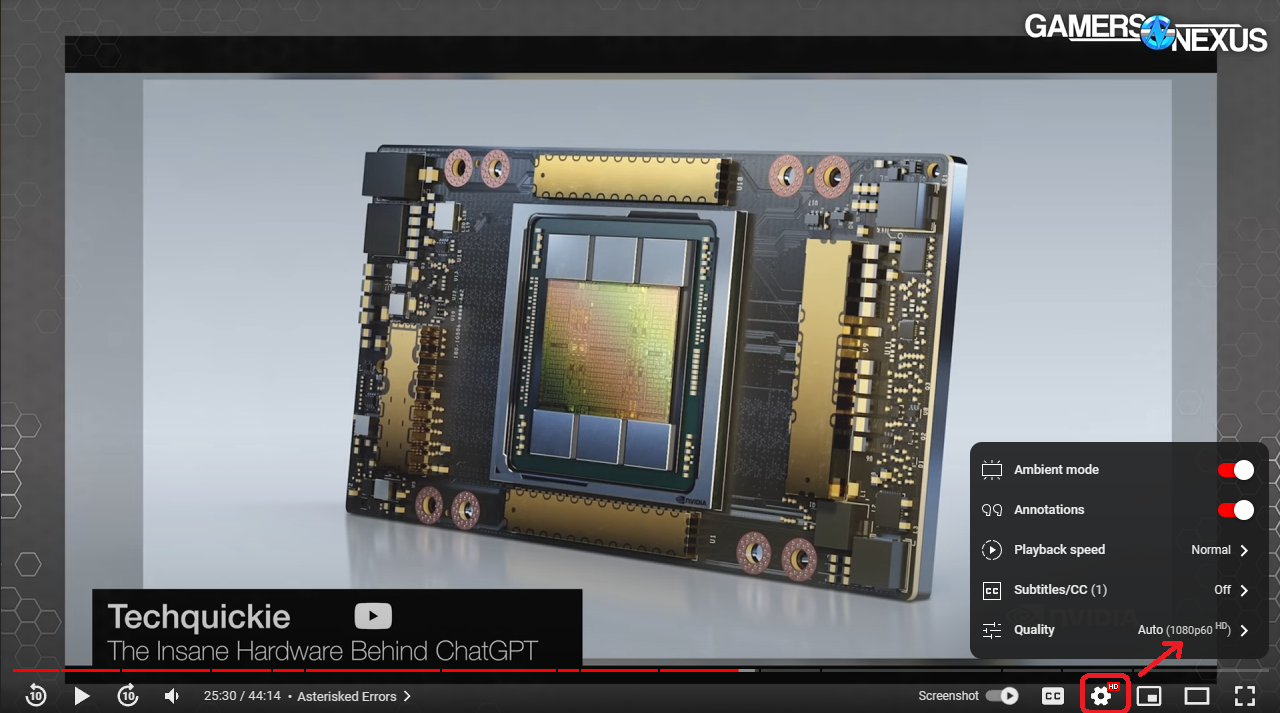
Changing video quality - Choose a lower quality option, such as 360p or 240p.
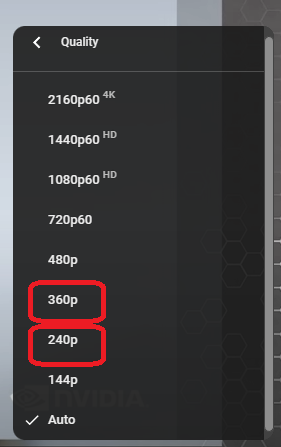
Selecting a lower video quality
Now, if you want to do the same on your phone, here’s what you do:
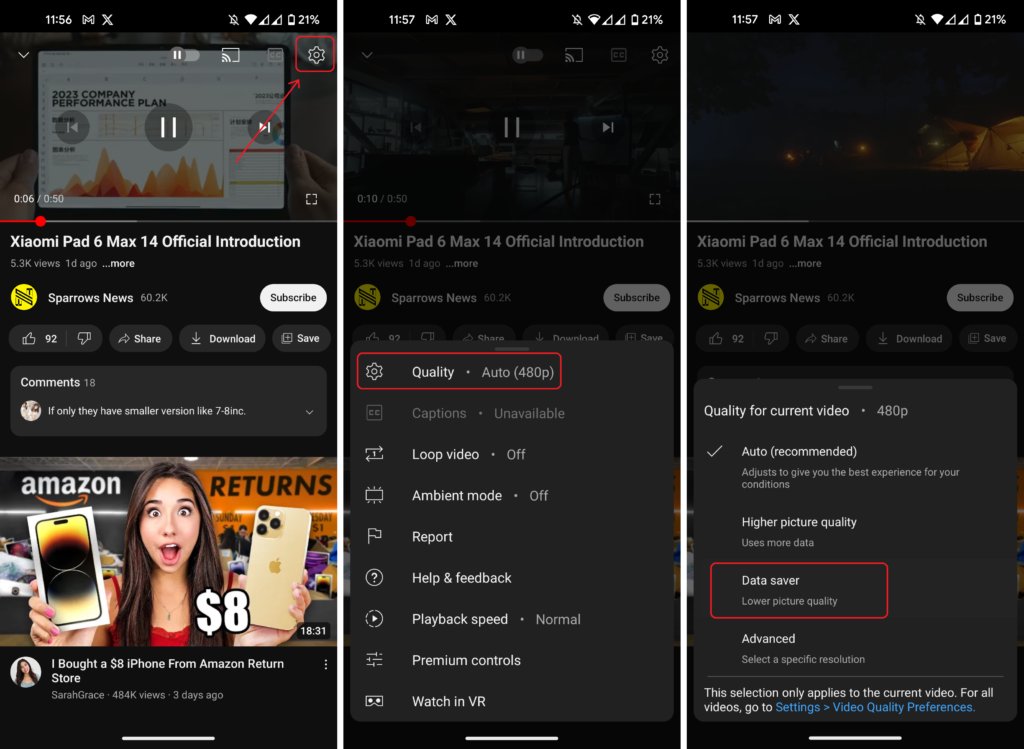
5. Interact with your device at least once every 45 minutes
YouTube has this “auto-pause” feature that pauses the video after a certain period of inactivity (45min). This is to prevent users from missing important content, and to save up valuable internet data once you’re away. You might even see a message saying “Video paused. Continue watching?” because of this.
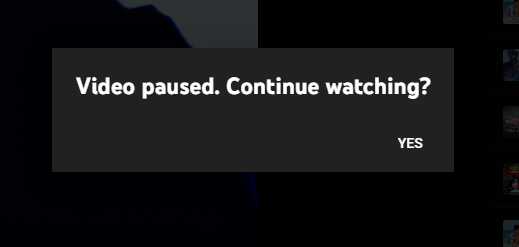
To avoid this, you can interact with your device at least once every 45 minutes. This can be as simple as moving the mouse cursor, pressing a key, or touching the screen. This will tell YouTube that you are still active and the video will not pause.
Alternatively, if you’re using YouTube on browser, you can install the YouTube NonStop extension that will prevent this feature from ever kicking in, and your videos will keep playing without interruptions.
6. Turn off “Remind me to take a break”
YouTube’s “Remind me to take a break” feature can sometimes pause the video or otherwise interfere with smooth playback, so you can disable it to fix the issue. This feature is only available on mobile devices, and the procedure to turn it off is same on both Android and iOS:
- Open the app and tap on your profile picture in the top-right corner of the screen.
- Tap on Settings and then go to General
- Turn the toggle off for “Remind me to take a break.”
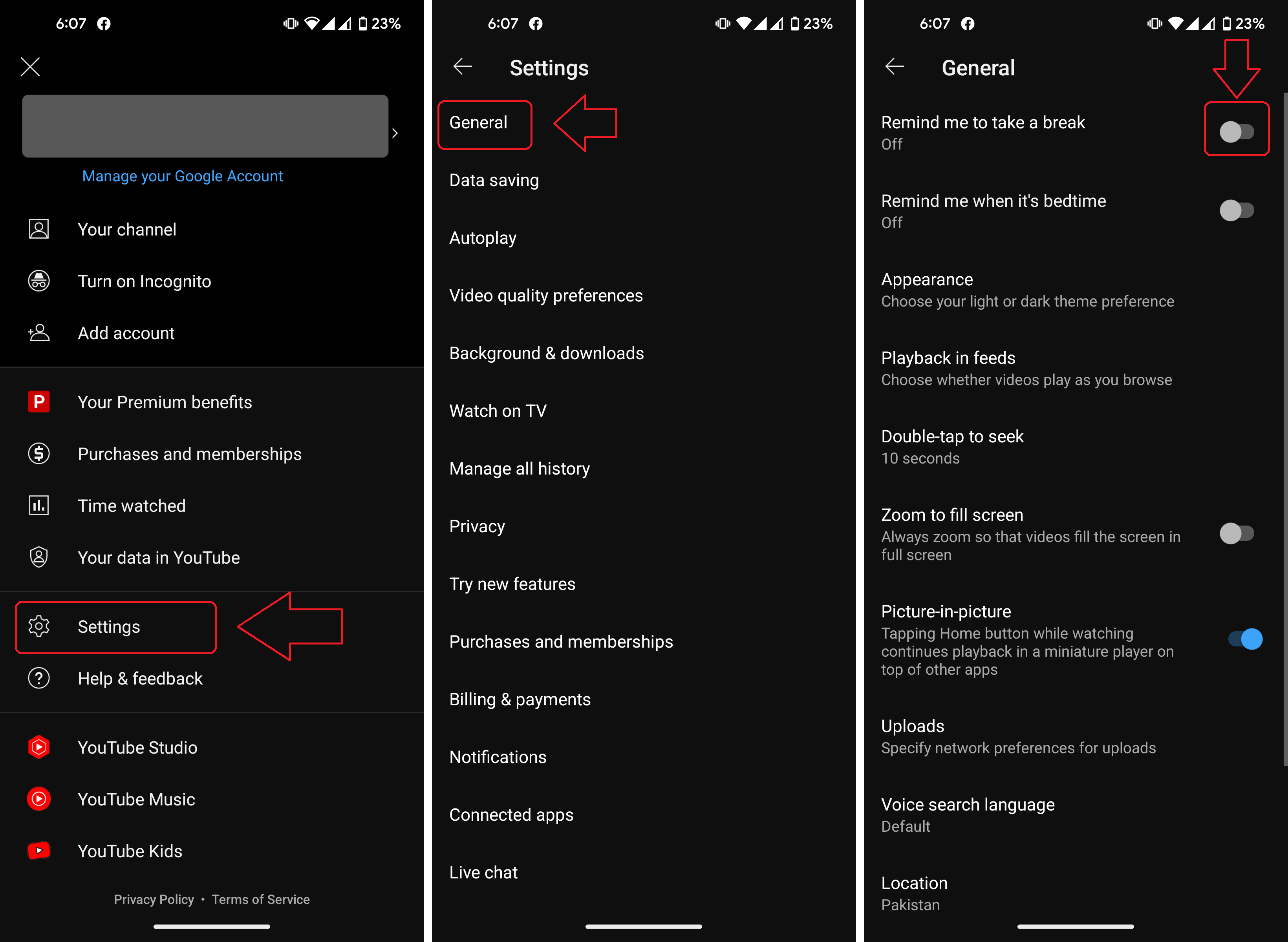
7. Check if the service is down
Before we begin, check YouTube on different devices accessible to you. If the issue is replicated on all devices in your household, then you can also ask a friend to see if they’re in the same predicament. This will instantly rule out all potential fixes and tell you that there’s a larger outage or issue in place.
If you get an error message when visiting youtube.com, such as “This site can’t be reached” or “The requested URL was not found on this server,” then the website is likely down. You can simply search “is youtube down” on Google and several websites showing real-time status of YouTube will pop up confirming the situation. DownDetector is one of the most popular ones.
8. Use YouTube without any headphones/speakers
Sometimes, a faulty audio device can interrupt playback. To eliminate this issue (whether on a phone, or PC/laptop), disconnect any headphones, or speakers that you might’ve plugged in and check if the issue still persists. If you have the option to change playback devices (such as in Windows) then make sure the correct one is selected. This is one of the most common things people overlook.
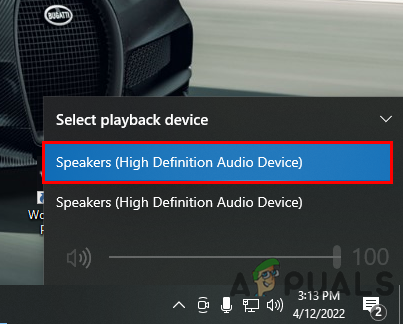
9. Clearing Cache
If the issue persists, consider clearing the cache for your browser or the YouTube app. We have detailed guides on clearing cache for a site (PC), and for an app (Mobile), so refer to these as a sort of last resort. Clearing cache might sound risky but it’s a very common practice and one of the most prevalent troubleshooting steps that might just be able to fix your problem.
Conclusion
And there you have it! YouTube’s occasional pauses and buffering can be a bit of a nuisance, but with these simple solutions, you’re well on your way to smooth streaming. If the issue still persists, you can contract YouTube Support with an explanation of your issue and they’ll be able to help you out with a customized solution.
FAQs
Well, try using YouTube on a different device. If the issue persists, contact your local ISP.
No, most often than not, these issues aren’t limited to a particular account, but there’s nothing wrong with switching to a different account to check if the issue is resolved.
The issue may likely stem from your RAM usage. If you’re on a phone, try closing all other apps that are not in your use. On a PC, try closing unnecessary tabs on your browser.
This might be because your internet speed may not be enough to match the buffering speed for the video. Try selecting a lower video quality.
You can use a website monitoring tool like IsItDownRightNow to check YouTube’s status. If you get an error message like “This site can’t be reached,” then the website is likely down.
 Reviewed by
Reviewed by 




